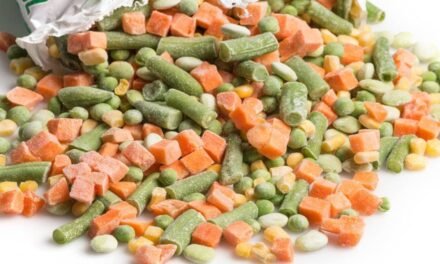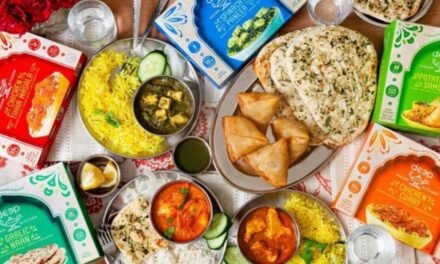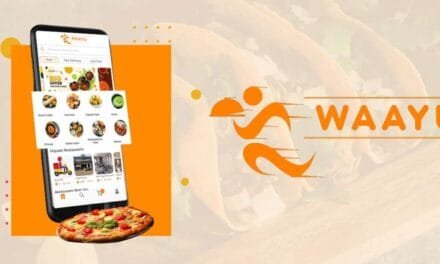Supermarkets and retail stores showcase a diverse range of new food products and new categories, reflecting ongoing trends in food delivery, manufacturing and marketing. Rajat K Baisya discusses these trends, particularly the rise of convenient food delivery models, highlighting the success of start-ups targeting busy professionals.
Table of Contents
Rise of Convenient Food Delivery Models
Supermarkets and food retail stores are indications of the kind of processed food products that are being produced by food manufacturers and marketers. The retail shelf can be seen full of new products and new categories. We also see various kinds of models of business of processed food nowadays.
A recent trend is seen mainly in cosmopolitan cities with large working populations with high disposable income. Enterprising start-ups have been doing successful business by targeting busy office-goers and offering different menus for seven days according to taste and customer preference. Learn more about India’s processed food industry trends here.
The options would be available from vegetarian, non-vegetarian, vegan, organic and natural products to suggest different choices, and there could be more permutations and combinations that customers can create themselves from attractively designed menu cards and product leaflets with illustrations that are being provided to be ordered online which will be delivered at home when needed. They also can be picked up from retail stores. This aligns with the growing trend of organized e-tailing in food distribution, as discussed here.

There are many conveniences in this. Housewives need not have to think every day about what to cook for lunch and dinner or even snacks. This task is taken care of by the food marketers. Consumers can get a variety of foods, and that makes them happier. Housewives would not be required to cook food at home, which would greatly relieve them. This comes in cardboard boxes arranged in trays for each meal. Read more about the role of packaging in extending shelf life and adding value to food products here.
I have spoken to people who buy what they call a food kit. They are happy and said not only varieties and taste, but they can have seven different meals from a tray of five meals as the quantity is large enough and it costs less than what it would have cost them in the restaurant. Some of them even said cooking at home will not be less costly. So, there is significant value delivery. They get a food menu with wide options and variations to choose from, costing less or value for money. It also offers great convenience. This model of ready-to-serve food thus is seen doing well.
This model’s convenience and affordability demonstrate how food marketers address changing consumer preferences, a subject explored here.
Ready-to-Serve and Ready-to-Cook Options
In another model, marketers offer only food ingredients and that too the exact quantity with recipe and process for cooking at home to make varieties of dishes for the number of people required. You are only to order a particular item and indicate the number of persons who would be eating that dish. Everything comes as required, and a housewife can serve innovative dishes every day to surprise and delight the family members without even thinking about what to cook for the next meal.
For every day and seven days a week, both lunch and dinner menus are taken care of. In this model, housewives also get the satisfaction that they are doing something and adding further value for their loved ones in the family. This innovation reflects consumer demand for convenience and sustainability, as highlighted in this article.
Market Segmentation and Consumer Preferences
In one model, you get the ready-to-serve dishes, and in another model, you get the ready-to-cook dishes. There is also no need to go to the market and buy anything. No need to stock anything and store anything. Even disposable food trays to serve foods are also provided if required.
Everything is for convenience. People now want to do and engage in other activities even if they are not working. They want to pursue whatever interests them and not get confined to traditional, monotonous, everyday cooking rituals. Food marketers made use of this consumer preference in a business model. The vendors are also actually aggregators. They source these items and dishes from a central kitchen like what the aviation industry supplies to passengers. Learn how these evolving trends are reshaping consumer habits here.

Success Stories in Food Delivery Industry
This online model caters to various choices, needs and customer segments. They are thriving alongside the typical home food suppliers, which are run and managed by enterprising housewives, and that is limited to a specific locality where physical delivery can be taken care of. Whereas, the online food delivery players operating on a national or even global scale, as discussed, are serving office goers, young couples, both working and small families with Western style habits and health consciousness.
These sections of society have literally stopped cooking at home. These models are different, but they can be clubbed under the food delivery industry. Earlier, we saw that many food delivery ventures closed down. Few succeeded, and few are still struggling. This new generation of food delivery players really upgraded the category with innovation. The industry has witnessed significant upgrades with innovation and adaptability, as detailed here.
Albert Heijn is a very successful food retail chain selling their own store-label brands in ready-to-serve category. Their strategy reflects the broader expansion of private-label products in global markets, as highlighted here.
HelloFresh is the largest meal kit provider based on the theme -cooking now made so easy. It has operations all over Europe and the United States, as well as in other countries, including the UK, New Zealand, Canada, and Australia. Its annualized revenue is now USD 6 billion. Headquartered in Berlin, Germany HelloFresh has 7.5 million users. They run a subscription model but also cater to individual orders.
ALSO READ
- How food delivery platforms are reshaping India’s restaurant ecosystem
- New Texturizing Pea Protein That Reduces Egg Use in Muffins
- Estonia Strengthens Food & Beverage Trade Ties with India
- NITI Aayog Declares Mizoram as “Ginger Capital of India”
- Gulfood 2026: Expanding Horizons in Global Food Trade
Another trend that I see is changing the breakfast menu and style. Muesli seems to be doing better than typical cornflakes. We already have many types of flakes, including wheat, corn, and now multi-grain flakes. There are many types of bread, including multi-grain bread, which is slightly costlier. Explore the potential of plant-based foods in India here.
Muesli is also called by different names in different countries. I have seen people take different types of breakfast on different dates, and for everything, there are ready-to-cook, semi-finished basic ingredients available to make the product quickly at home.
Cow milk, or typical dairy milk, is now almost disappearing. Traditional cow milk is consumed mainly as milk products, including sweetmeats, cheese, yoghurt, and dahi. Fresh milk consumption has already switched to all kinds of vegetable milk, which tastes very close to cow milk. Earlier, we saw full cream, toned, double-toned, fresh, pasteurized, sterilized, and long-life milk. But now, fresh milk consumption is mostly vegetable milk. Some of these products, like, say, oats or almond milk, taste so good that you will not miss cow milk. If the stocking of the milk on retail shelves is any indication, we can conclude that over 70% of fresh milk consumed now is not typical dairy milk abroad.
Challenges and Opportunities in Indian Food Market
However, this trend is still not visible in India, and the bulk of the pasteurized fresh milk is buffalo milk in India. But the vegetable milk is slowly growing. The varieties that are available in the Indian market are mostly imported or made locally in limited quantities by small food processors. The cheese market in India has not grown that way, and as such, we don’t have good cheese not to speak of a variety of cheese. You get those in select stores which are imported into India. Learn more about how India’s food processing industry is evolving here.
Even though India is the world’s largest milk producer, milk products are still limited to a select few. We don’t even have good-quality Greek yogurt. We have set yoghurt, but not Greek yoghurt, that you get from high-fat content cow milk. It has an excellent creamy mouthfeel and taste as such, made from full cream milk. For good quality cheese production, we need cow milk. In India, the bulk of the milk is buffalo milk. Discover more about the export potential and challenges in India’s dairy market here.
Another trend is also being witnessed, which is that there are numerous brands and local products made by small companies. Still, the quality is good and comparable to the best available in the country. Small processors are able to make good presentations and merchandise their product offerings to get good shelf appeal. Their success showcases how small businesses are shaping the future of food processing in India, as discussed here.
Conclusion
In India, we have such small processors and aggregators operating in metro cities like Delhi, Mumbai and Bangalore, selling salads, office meals and ready-to-serve meals in packaged form following food delivery models. Many failed in the traditional food delivery business and have withdrawn from the market. However, another set of players has introduced newer models and shown remarkable success.
*The author is the chairman of Strategic Consulting Group and served as Professor and Head of the Department of Management Studies, IIT Delhi, India.
‘Processed Food Industry’: The Voice of Food Processing Industry
Processed Food Industry (PFI) is a premier English-language monthly B2B publication (ISSN 09721649) headquartered in New Delhi, catering to the vibrant and ever-evolving food processing industry. While we don’t claim to be the largest or most widely read, our proud legacy of over 27 years—publishing continuously since 1997—has earned us the trust of industry professionals as a reliable source of insights and information.
If your goal is to tap into the booming Indian and South Asian markets to promote your equipment, technology, software, or consumables, PFI is your strategic partner. With our hybrid approach across print, web, and social media, we help you establish strong brand recognition rooted in market relevance. Backed by a team of top-tier technical writers, we’re ready to work closely with you and your customers to craft compelling content that drives results.
India and South Asia’s food industry is expanding rapidly, driven by efficiency and cutting-edge innovations. Don’t miss the opportunity to elevate your brand and engage with this dynamic market. Get our 2025 media kit to fine-tune your marketing strategy, increase your visibility, and convert potential customers into valuable conversations. Additionally, ask for a sample copy of our monthly magazine and experience the quality and relevance we deliver.
Let us help you define your role in the future of the food processing industry.

Have a news or topic to share with industry? Write to us editorial@pfionline.com
















